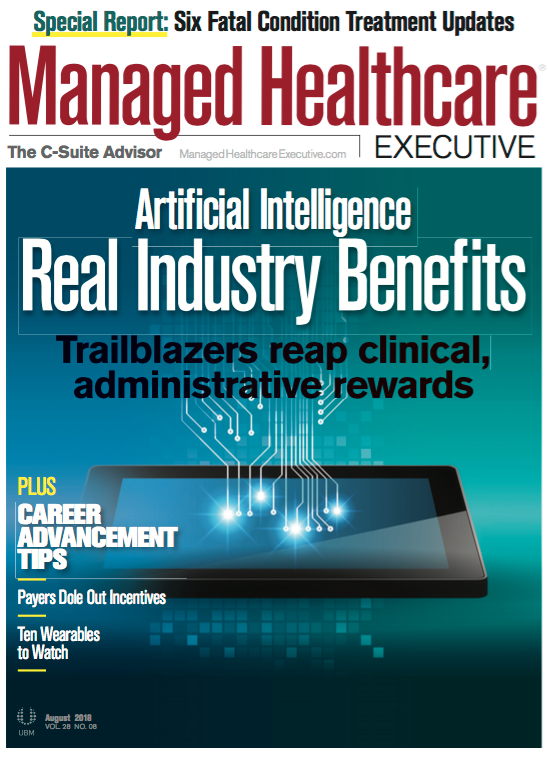Four Ways Health Execs Can Advance Their Careers
How healthcare executives can ensure they are always in the best position to take advantage of the next career opportunity.
LinkedIn Connect

Burch

Fahey-Kaiser

Thirty-seven percent of healthcare executives are considering a career change within a year and 9% are considering an immediate career change, according to a 2018 career report from healthcare executive search firm B.E. Smith. Even if you’re not ready to make a transition right now, it’s always important to keep your resume polished and your networking skills on point. The industry is changing rapidly, and new opportunities may arise unexpectedly. Here’s advice from experts.
Build in-person connections
Twenty-eight percent of LinkedIn users have between zero and 300 connections, according to a 2016 report from Statista. Twenty-seven percent have between 500 and 999 connections. And 1% have more than 10,000 connections. Consider your own page. How many of your connections have actually interacted with you one-on-one?
Christina Maley Higley, owner and CEO of Rochester, New York’s MedSense Recruiting, says sending a LinkedIn connection request to a useful new contact, such as a chief operating officer at a nearby hospital, is a smart tactic. But that’s only half the battle. After the person accepts your request, Maley Higley says follow up with a personal note.
Be bold, she says. “Ask him if he’d like to meet for coffee and chat further about his position. Tell him you’d like to learn more about what he does.”
A lot of people are willing to meet for 15 minutes, so it’s worth a try, says Maley Higley. Once you are chatting, set the right tone by saying something like, “Hey John, I’ve really taken an interest in what you do at your organization. I’m thinking about my next career steps and bettering myself. How did you get to this point in your career?”
Consider lateral opportunities
Cody Burch, executive vice president at B.E. Smith, notes the large transformation occurring in healthcare. Take, for example, CVS Health’s move to acquire Aetna, Geisinger’s shift to serve as provider and payer, and UnitedHealthcare’s OptumCare’s 2017 acquisition of Surgical Care Associates.
He recommends healthcare executives embrace this transformation and consider it when planning their career trajectory. For example, a lateral role at a payer organization could be a good career move if you have years of experience on the provider side.
“Don’t see your next step as a ladder,” he says. “You need to think of opportunities as a lattice. Even if one role feels like a lateral move, you can learn and grow and be better prepared.”
Healthcare executives also need to “demonstrate the ability to change,” says Burch. “With consolidation and all the things that are associated with that, healthcare organizations need executives who can be flexible and adaptable to those changes.”
Don’t rope yourself in
Given the blending between payer and provider organizations, build your skill sets in both areas. For example, provider executives working in hospital operations could get involved in a large-scale project that includes team members who work closely with payers, says Burch.
Provider executives should also realize that they bring a wealth of perspective to payers. “You bring the clinical side to the conversation, he says. “What you need to be able to do is demonstrate the capacity to talk about the clinical side and how [providers] may perceive change or adversity.”
Still, Burch notes that pitching yourself isn’t easy. A good way to start is by “working above your day job,” and asking to be assigned to cross-organizational teams that are solving the organization’s toughest problems.
Always be ready
Kasey Fahey-Kaiser, director of the payer-healthcare IT practice at Solon, Ohio-based Direct Recruiters, says new “opportunities can come in disguise or at inopportune times.” Don’t be so heads down that you miss out on what’s going on around you, she says.
While you don’t have any control over an unforeseen retirement or move at your organization, the best way to position yourself for success is to excel in your current role and exceed expectations, says Fahey-Kaiser.
“[D]own the road, those former colleagues, clients, and managers will be the meaningful references and relationships leveraged to help [you] achieve [your] dreams,” she says. To ensure you’re ready for an unexpected opportunity, she suggests continually tracking your quantifiable accomplishments and keeping an updated resume.
Aine Cryts is a writer based in Boston.

Extending the Capabilities of the EHR Through Automation
August 2nd 2023Welcome back to another episode of "Tuning In to the C-Suite," where Briana Contreras, an editor of Managed Healthcare Executive, had the pleasure of chatting with Cindy Gaines, chief clinical transformation officer at Lumeon.
Listen